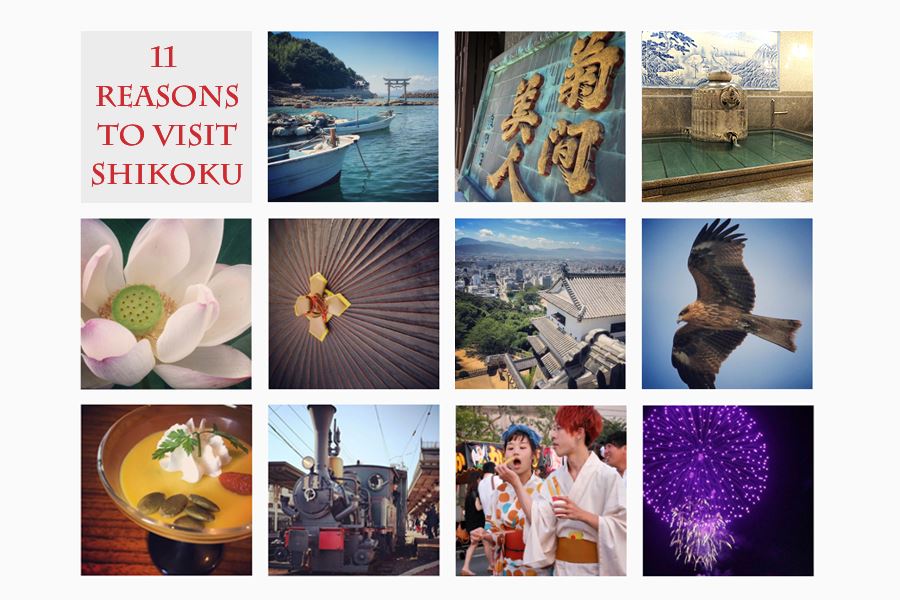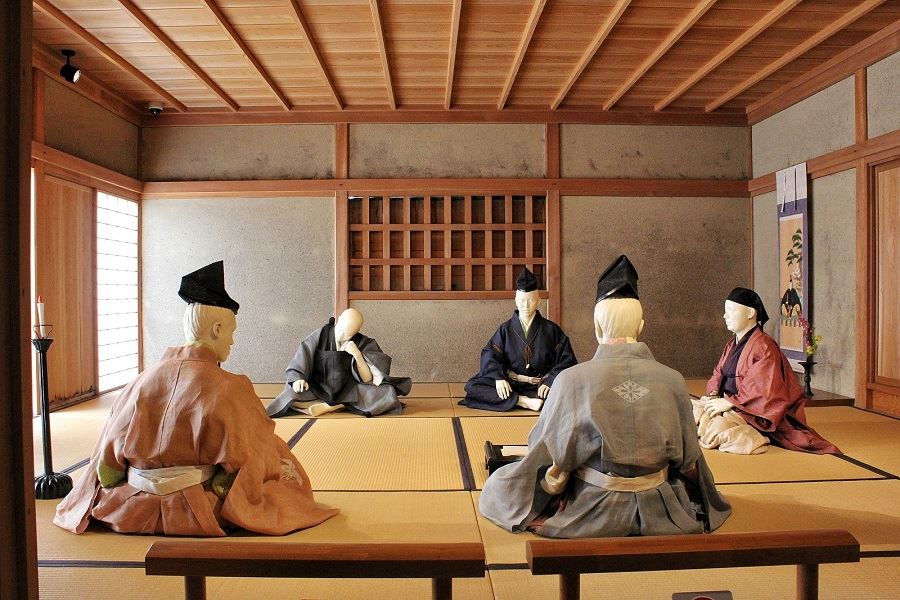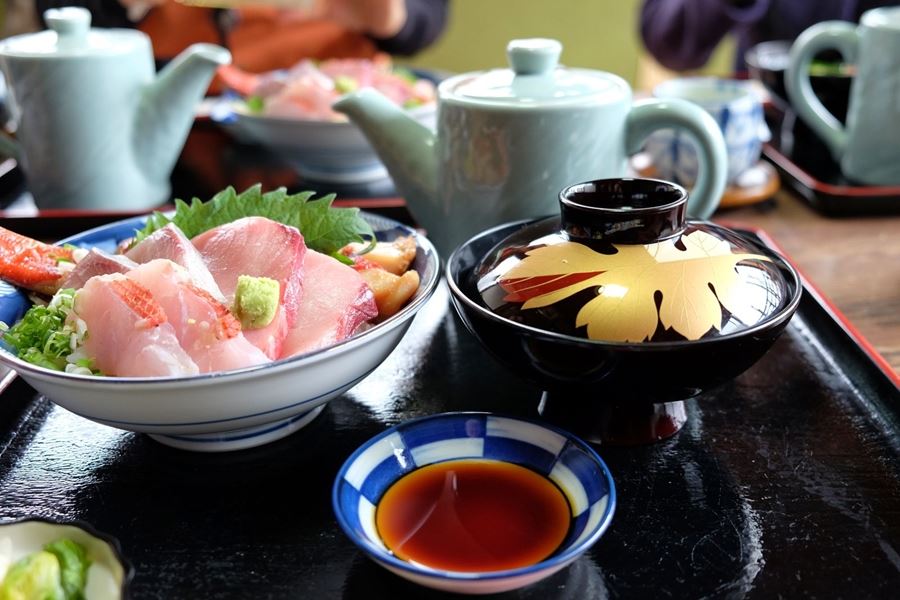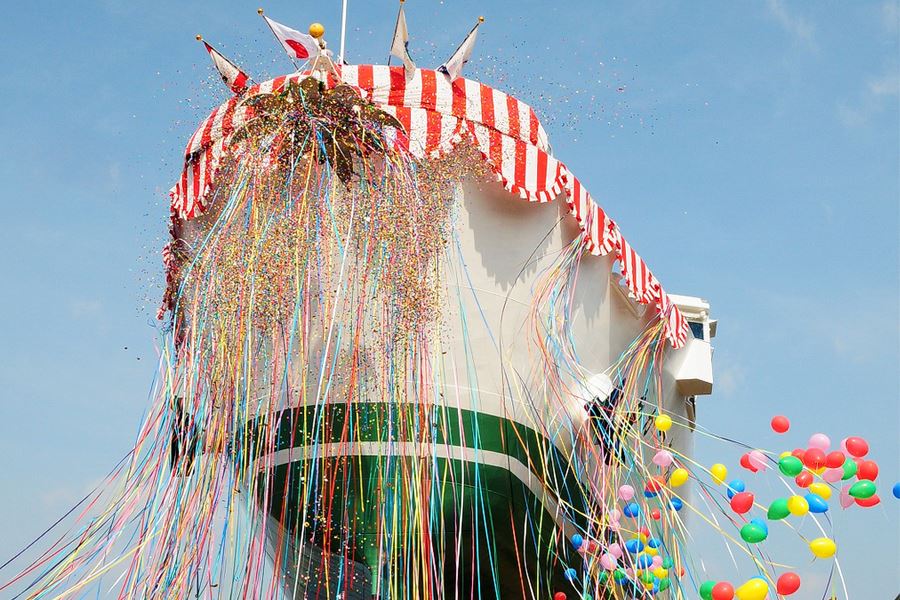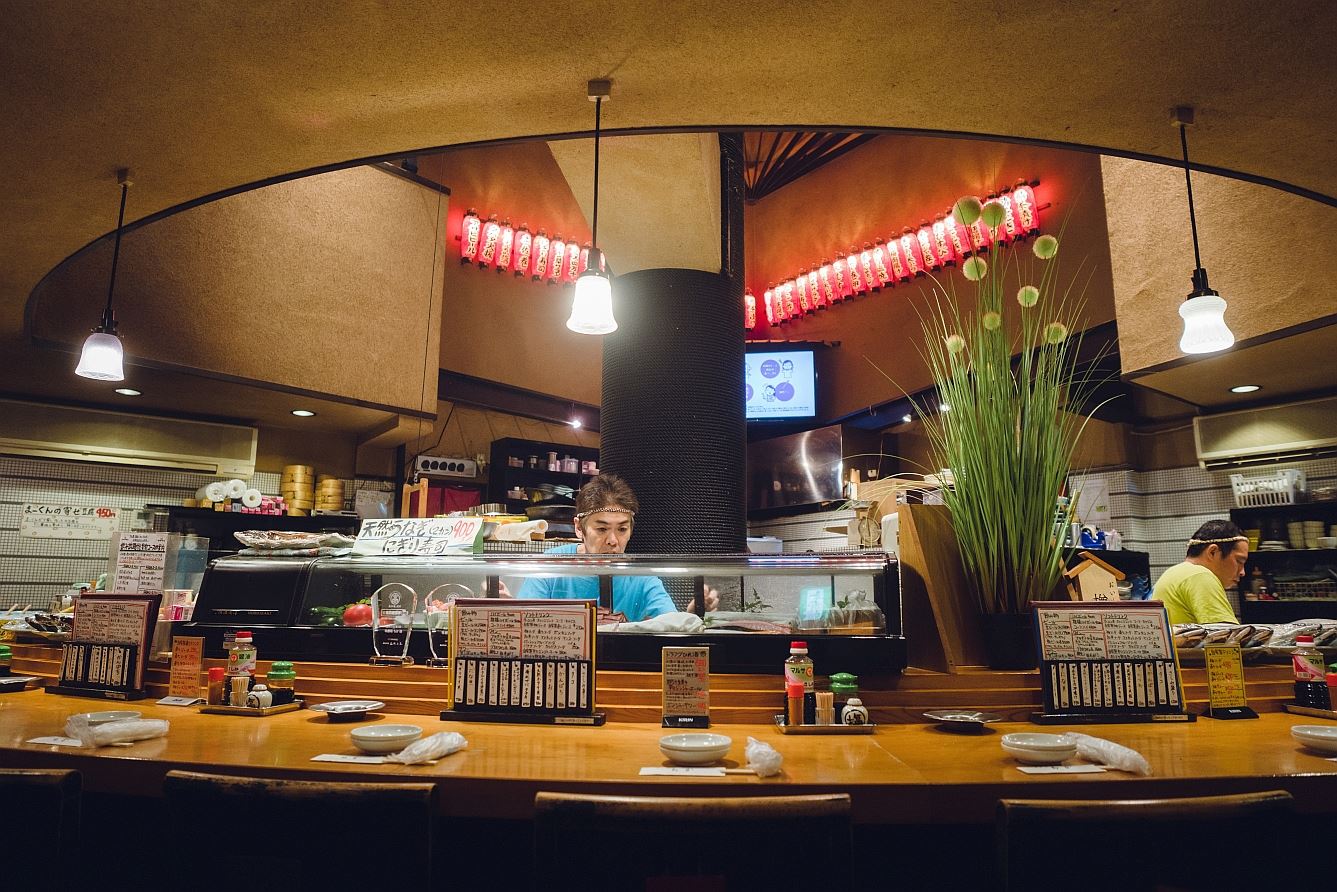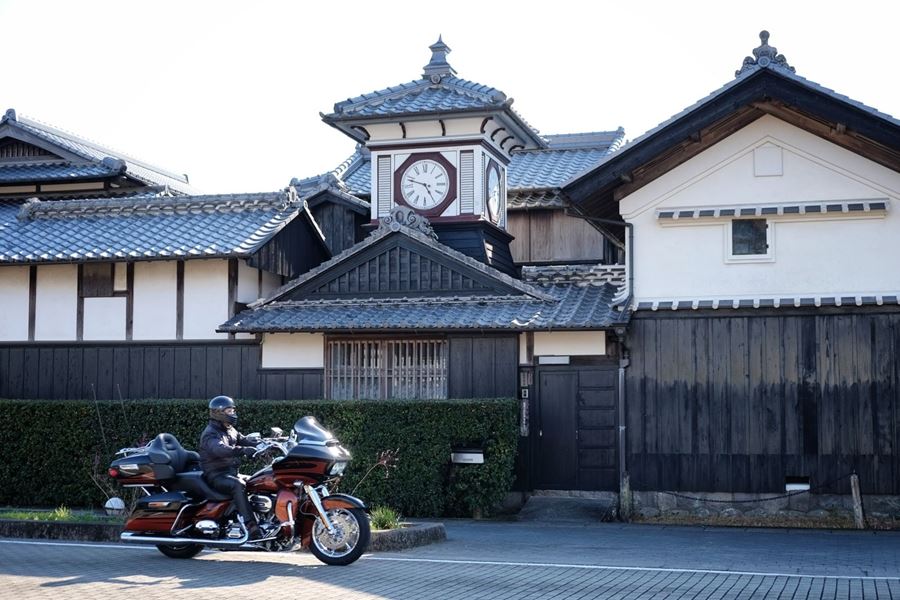Temari
Home » Temari
Temari
Temari were once a commonplace of refined Japanese life, and these richly embroidered balls can still be found in the homes of elderly people, in shrines, and antique shops. If anyone deigns to notice these faded, dusty curios, they’re likely to reflect how people in the old days had a lot of time on their hands. But at Kagari Temari in Takamatsu run by Araki Eiko, this traditional handicraft is enjoying a revival, and here you can enjoy the vivid colours and eye-popping patterns of freshly made temari.
Extraordinary complexity from simple things
The materials used to make temari couldn’t be simpler or more mundane – rice husks, paper, and cotton thread. When rice is harvested, the dry shell of each grain is milled off. A few handfuls of these husks are wrapped with thin tissue paper. This is then wound repeatedly with cotton thread of a single colour. If it’s done evenly, it results in a perfectly spherical ball. This plain ball is the base for an extraordinary variety of complex embroidered patterns.
Cotton of different colours are used to create these patterns, which are built up laboriously, one thread at a time. The threads are driven through the ball with a needle, and considerable skill and judgement is required to make the needle emerge where it’s supposed to. Since the threads are stretched from point to point, the patterns are necessarily made of straight lines, but by subtly arranging the lines at angles to each other over the surface of the ball, a skilled practitioner can create the illusion of curves. Naturally, designing such a sophisticated pattern repeating over the whole ball requires advanced visualisation.
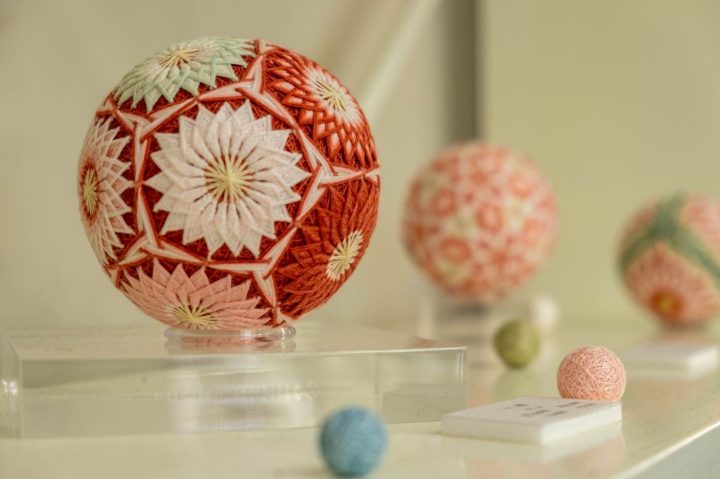
Temari were once made all over Japan. It’s thought that originally, they were crafted for the daughters of feudal lords by their handmaidens using brightly coloured silk thread. The balls were also used for the game of kemari, where the players stand in a circle and kick the ball, attempting to keep it constantly in the air. It was a game played by aristocrats.
Later, temari became popular among common people. Instead of expensive silk, they used more affordable cotton thread, dyed with a variety of natural pigments such as indigo, madder, miscanthus plant, sappanwood, gromwell root, walnut, loquat, and pomegranate. Although the materials were of a lower grade, there was nothing to stop commoners from producing elegant designs, which were handed down from mother to daughter for generations.
A nearly forgotten art
As Araki-san recalls, “Back in the old days, you would find a few temari in every home, especially around Kanonji where I grew up. But somehow, I never paid them any notice.” By then, the traditional pastimes and playthings had been replaced by mass-produced toys and other distractions. Araki-san first became aware of temari as an adult. “My mother-in-law would have bundles of colourful cotton threads beside her as she created temari. I’d never seen such beautifully coloured cotton before, and I was amazed.”
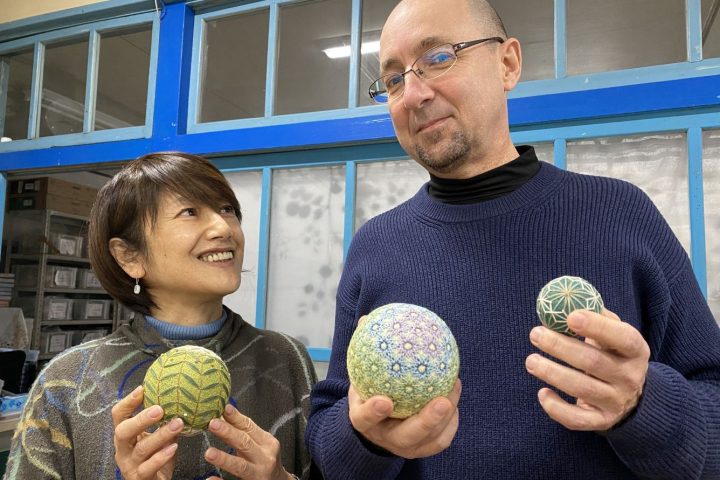
There’s a reason why everyone in Kanonji had temari. In the Edo period, when today’s Kagawa Prefecture was known as Sanuki, the region was known for the “three white products of Sanuki” – salt, sugar, and cotton. The area has a warm, dry climate, which is favourable for producing these commodities. Western Sanuki where Kanonji is located was especially renowned for its temari during the Edo period. But at the end of the 19th century, rubber balls rapidly became popular, and the techniques for making temari were almost lost.
However, Eiko’s father-in-law Kazuo, who was employed by Kagawa Prefecture, was involved in the ‘Mingei’ folk crafts movement in the 1960s. The aim of the moment was to document and maintain the traditional techniques which the start of mass-production earlier in the century had seemingly rendered obsolete. Kazuo advocated the establishment of a facility in Kagawa for collecting examples of folk crafts, and the Sanuki Folk Crafts Museum was founded in 1965. Located in Ritsurin Garden, it has a huge collection of traditional crafts, daily items, and children’s toys, gathered from all over Japan. Kazuo was particularly impressed by the embroidered cotton balls of his native Sanuki, which hitherto he’d paid no notice.
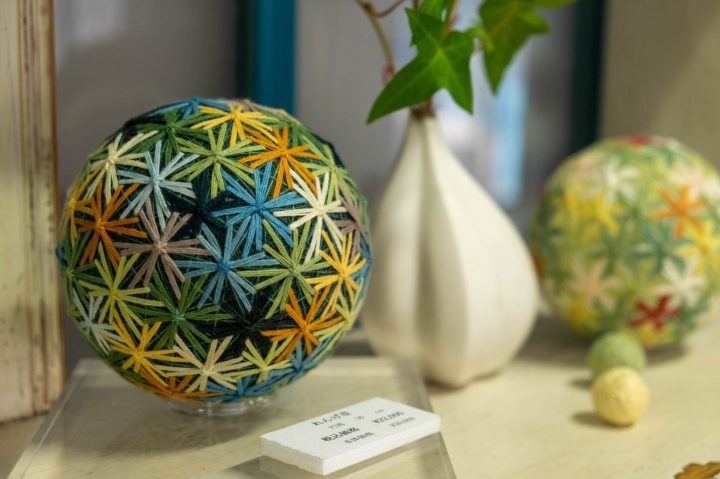
Seeking to learn more, Kazuo enquired locally, but nobody knew much about temari. So he approached some of the founders of the Mingei Movement for help. Tonomura Kichinosuke, the first director of Kurashiki Museum of Folkcraft, taught him how to dye cotton with natural materials, as well as the relevant embroidery techniques, which enabled him to recreate the old temari. His work to popularise the revived craft led to the foundation of the Sanuki Kagari Temari Preservation Association in 1983, and in 1987, temari were designated a Traditional Craft of Kagawa.
An elegant and warmly welcoming space in Takamatsu
Like her parents-in-law, Eiko became entranced by the potential of temari. “Just as my temari would somehow look different from my mother-in-law’s, each temari reflects the craftsmanship and sense of beauty of the person who made it. And that’s the fun part. I wasn’t familiar with the traditional methods, so in a way, I was free from some preconceptions of what to or not to do. If my temari have a certain freshness about them, it may be due to that.”
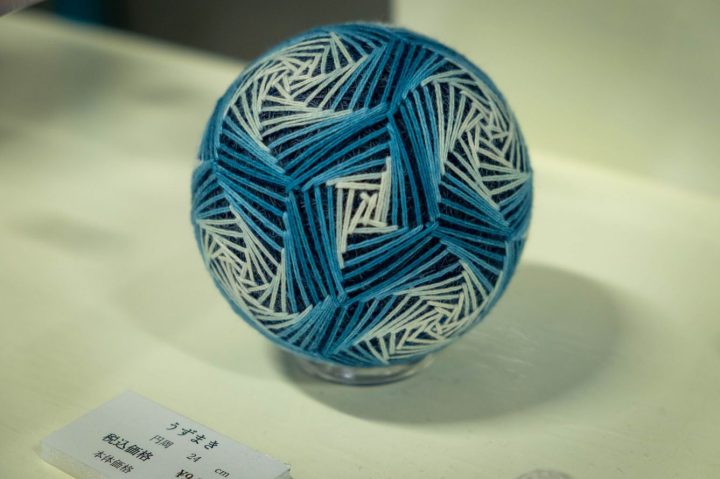
Now she’s a leading member of the Association, which relocated from Kanonji to Takamatsu. The office is a charming Showa period building with studios and a shop around a small garden. The Association numbers around 150 people including managers, instructors, and staff who all produce temari. Most of the staff are local women, who are simply drawn to the beauty of temari and the satisfaction of making them. The Association trains its members in all of the steps from dyeing the cotton and making a basic ball, to embroidering and creating new designs.
Visitors are welcome, and you can drop in to browse the selection of products in the shop. Temari come in various sizes and a limitless array of designs, from purely geometric and abstract patterns, to creations that mimic nature. Many temari feature flowers, such as chrysanthemums, cosmos, and cherry blossom. Takamatsu is on the Seto Inland Sea whose surface is roiled by racing currents that produce whirlpools, and one design in blue and white recreates the dynamic patterns that enliven the Inland Sea.
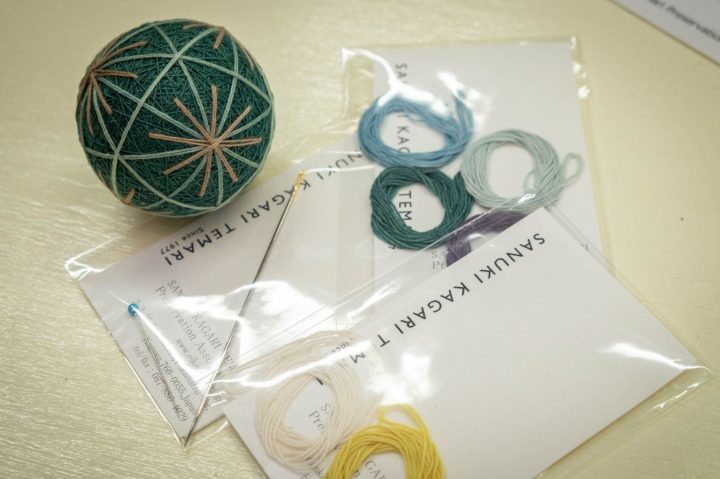
As an introduction to the pleasures of creating temari, you can try making a small example of your own. Starting with a premade base ball in a colour of your choice, you embroider a simple geometric pattern under the gentle guidance of an experienced member of staff. The sensation of pushing a needle through crunchy rice husks is a peculiar one. To create the intended pattern, you have to lay down lines of thread with a mental picture of the finished item. It takes great concentration to make the needle emerge where it needs to, and you soon find yourself deeply absorbed in the task. If you get stuck, the watchful instructors will set you straight. This activity is enjoyable and satisfying for anyone of a slightly creative bent. The finished temari, made by your own hand, is a lovely memento of a quiet hour spent in Takamatsu.
Related Tours

Experience the most beautiful and interesting temples of the Shikoku Pilgrimage in seven days.

A tour for families or friends, staying in the most characterful kominka and ryokan of Shikoku.

Visit the most beautiful and interesting temples of the Shikoku Pilgrimage and walk the toughest trails.

